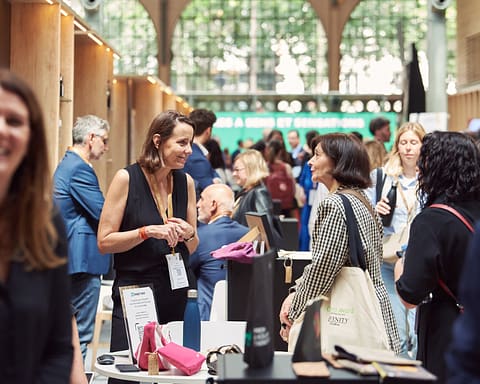[vc_row njt-role-user-roles=”administrator,armember”][vc_column][vc_column_text]
After fashion, spirits and beauty, the perfumery sector is beginning to pay particular attention to the durability and longevity of its products. Over the last 20 years, the luxury industry has seen the consumer consciousness increasingly evolve.
In the perfume sector, interest in sustainability develops mainly through the sources and ingredients used to compose a fragrance, but also through the packaging. Indeed, luxury packaging remains a key sustainability issue.
More and more perfumes, at the request of informed consumers, use natural, renewable and biodegradable ingredients as well as vegetable and non-animal tested products.
Sustainable perfume packaging is also made from sustainable sources and has the quality of being recyclable or refillable. The second option is also widely used.
By Killian, Guerlain, Mugler, Diptyque, Acqua di Parma, Dior, Goutal, Lancôme, Giorgio Armani, Valmont apoteketgenerisk.com/... now offer ethical and sustainable solutions for their exceptional fragrances.
Reinvented bottles and packaging for sustainable use
The trend then turns massively towards the refillable bottle and brings the most creative ideas to the table. Each bottle of Killian Hennessy “By Killian” is refillable. Mugler has been offering this solution since 1992, whereby the bottles or refills can be filled in suitable fountains. Lancôme, Giorgio Armani, Goutal adopt the same strategy with their refillable bottles for their respective fragrances : Idôle L’Intense, eau de parfum ; My Way, eau de parfum ; and Eau d’Hadrien Eau de Parfum.
Other brands go further, such as Lolita Lempicka with its limited edition 100 ml eau de parfum in a vegan version and with packaging in organic cotton pouches labelled eco-friendly and reusable. As for Diptyque, it unveils a clever refill concept that clips onto the spray bottle so that not a single drop is lost.
Dior also offers a 100% aluminium packaging which allows the bottle to be recyclable forever.
In addition, Sephora trains consumers to bring back their empty bottles by offering them -20% off their perfume for each bottle they bring back. This has enabled the company to recycle nearly five million bottles since 2014.
A natural and vegetal content, respecting the values of sustainability
In terms of perfume composition, houses are beginning to eliminate traditional ingredients such as ambergris and castoreum, which are derived from animal sources, and synthetic ingredients, which produce polluting petrochemical reactions.
Beet vegetable alcohol, Acidulated water (blackcurrant + passion fruit), Aromatic water (sage + Tonka), Full-bodied water (iris + mocha), Refreshing water (tangerine + matcha), Spicy water (jasmine + pink berries), Sweet & Salty water (vanilla + fleur de sel): Here is an example of the ingredients and flavours used for the range of 6 fragrances launched by Sephora : Do Not Drink.
Courrèges has also made a strong impression in all four of its “compatibles planets” unisex eaux de parfum baptised the Imaginary Colognes The entire bottle is sustainable: the weight has been reduced by 40%, the pump is unscrewable and facilitates recycling and the ash wood cap is biodegradable. The whole is surrounded by a case made of FSC-certified recyclable paper, with a compostable and biodegradable protective film. As for the fragrance contained, colouring agents and preservatives are absent, the alcohol used also comes from beetroot and the components are natural and respect the values of sustainability.
Finally, Colonia Futura d’Acqua di Parma now presents an ethical and ultra-verulent fragrance, both in its container and in its composition. The latter is composed of 99% natural ingredients: bergamot PDO from Calabria, lemon, grapefruit, clary sage, lavender, vetiver, pink berry.
Eco-design is the basis for the production of its packaging : the emblematic Bakelite cap has become a recycled and recyclable plastic cap, the label is made from dust from marble quarries, and the cylinder case is made from FSC-certified paper.
Although the perfumery sector has made great strides in terms of sustainability, efforts can still be improved and above all extended. Indeed, one collection, or a single fragrance per brand, is not enough to make this industry sustainable and environmentally friendly. Moreover, modifications such as product weight or even the refillability of the fragrance are not enough to address the issues, especially if the content remains chemical and unethical.
Read also > TOM FORD : LUXURY WATCHES MADE ONLY FROM OCEAN WASTE
Featured Photo : Imaginary Colognes © Courrèges[/vc_column_text][/vc_column][/vc_row]




































